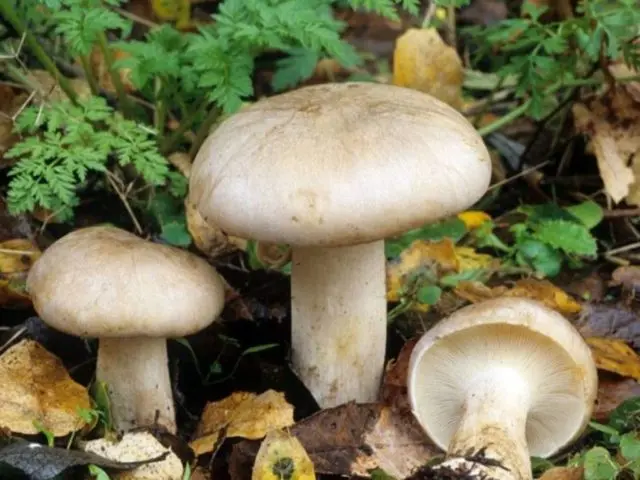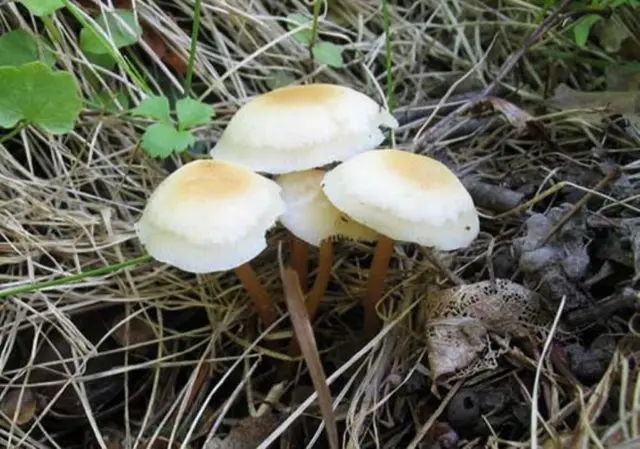Contents
Collibia spotted is an inedible, but not poisonous species of the Ryadovkov family. Despite the tough flesh and bitter taste, it has its fans. The fungus also has poisonous counterparts that can lead to mild poisoning. In order not to make a mistake in choosing, you need to get acquainted with the description, study the photo and video.
Description of Collibia spotted
Collibia spotted, or spotted money, is an attractive mushroom with dense flesh and characteristic red spots on the cap. Acquaintance with the species must begin with external characteristics, as well as know the time and place of growth.
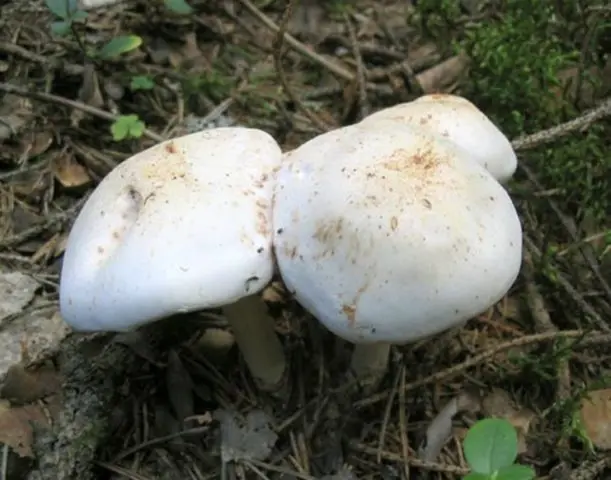
Cap Description
The cap of the fungus is large, up to 12 cm in diameter. In young specimens, it has the shape of a bell, straightens with age and becomes flat with pronounced folded edges. Often the mushroom can be recognized by its bizarre shape, it can look like the palm or paw of an animal.
The surface is covered with snow-white or coffee skin with rusty draining or separate spots of various sizes. The cap skin does not absorb moisture and does not change color depending on weather conditions.
The snow-white, fleshy cap is dense and elastic. The spore layer is formed by thin frequent snow-white plates, partially adherent to the stem. It reproduces by rounded colorless spores, which are located in a pink spore powder.
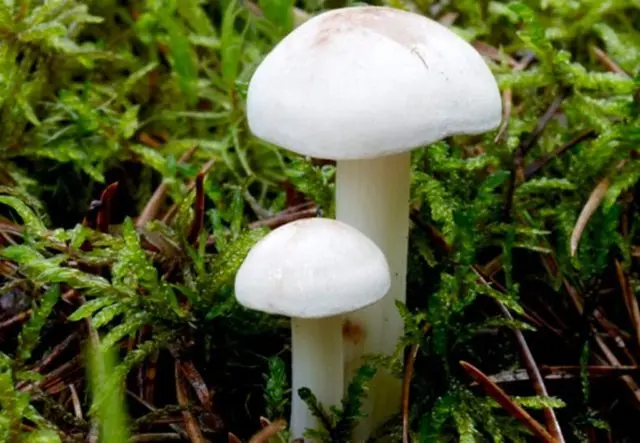
Description of the leg
The leg is 12 cm high and has a cylindrical shape. Tapering at the base, it goes deep into the substrate to a considerable depth. With age, it can twist and change shape. The color of the scales is white, with red spots. The fruiting body is dense, fibrous, becoming hollow with age.
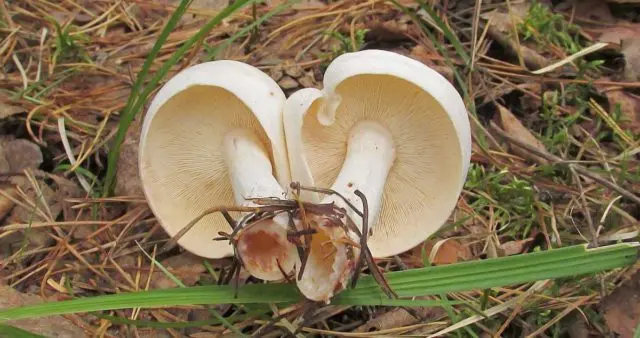
Edible Collibia spotted or not
This representative is conditionally edible. Due to its tough flesh and bitter taste, it is rarely used in cooking. But after prolonged soaking and boiling, mushrooms can be fried, stewed and preserved.
Where and how does spotted money grow
Prefers to grow in damp glades with acidic soil, among coniferous and deciduous trees. It can also be found on rotting stumps and other woody debris. The mushroom comes into fruiting from August, the period continues until the first frost. It grows in numerous groups, rarely in single specimens.
Twins and their differences
Like any representative of the mushroom kingdom, it has twins:
- Govorushka – an edible species with a bell-shaped cap and a dense, fleshy leg. The smooth surface has a light rusty color that fades with age and forms a rusty blotch. The cylindrical leg is high, painted in light lemon color.

- Forest-loving – a conditionally edible species with a snow-white cap and a thin, hollow leg. The fruit body is thin, fragile, without a pronounced taste and smell. It grows on rotting wood from early summer until the first frost.

Conclusion
Collibia spotted is a conditionally edible species that is rarely used in cooking, as its flesh is hard and bitter. Distributed in regions with a temperate climate and grows among coniferous and deciduous trees. In order not to make a mistake during mushroom hunting, you need to know its detailed description.










